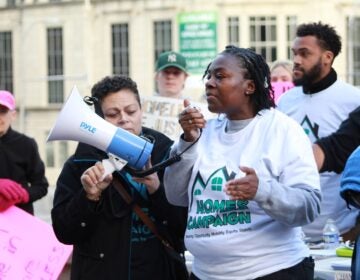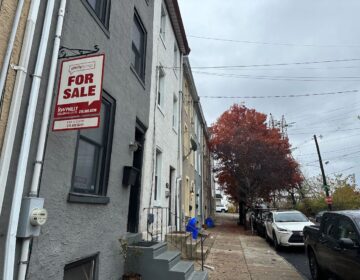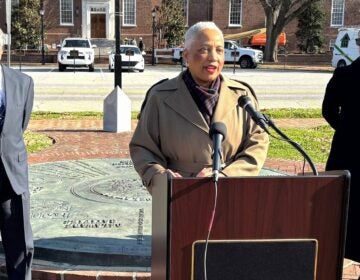Delaware developers are rehabbing vacant homes for the middle class
The statewide program subsidizes developers rebuilding houses in neighborhoods where the rehab costs are higher than what the home is worth.
From Philly and the Pa. suburbs to South Jersey and Delaware, what would you like WHYY News to cover? Let us know!
On a recent weekday, waves of drywall dust from demolition wafted out the windows of a squat brick row home in a neighborhood near Wilmington’s downtown.
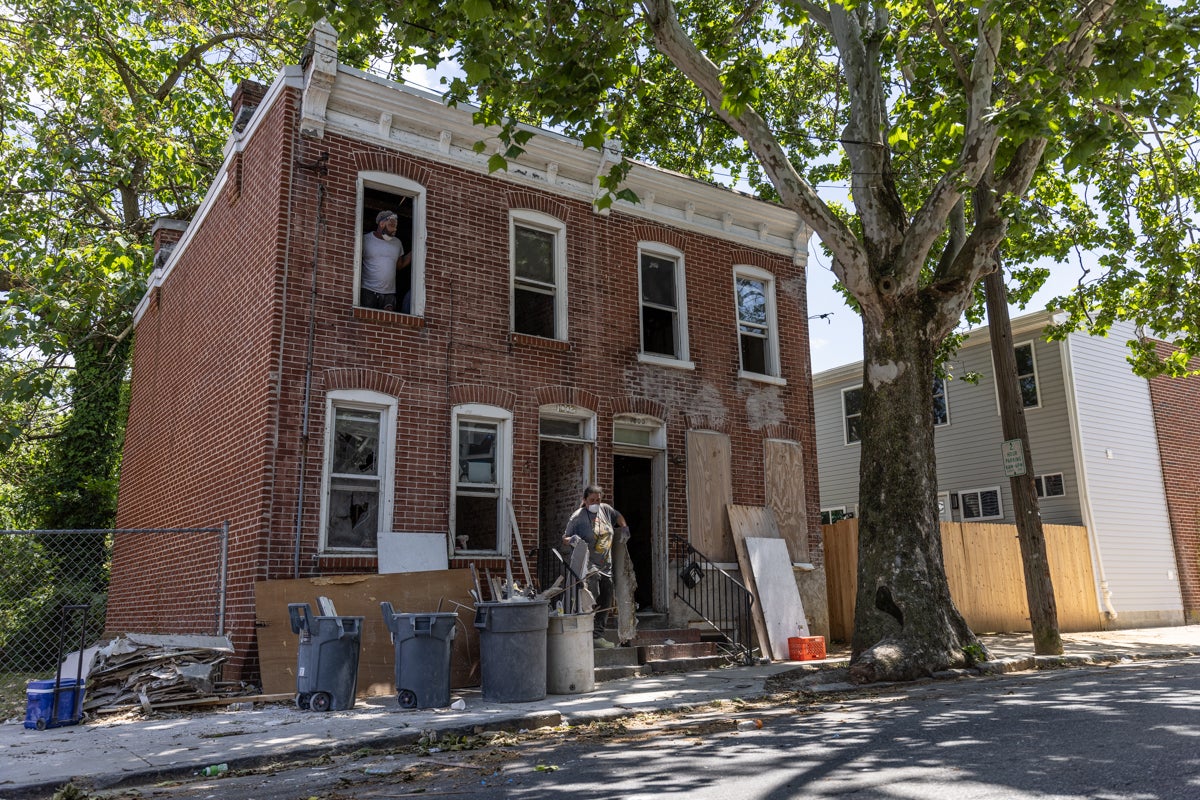
Charly Bass Davis, a construction laborer by trade, never thought she would be rehabbing vacant houses in her old neighborhood on the East Side as a real estate developer.
“It’s like one big construction site, but it’s on one city block,” Bass Davis said about what’s happening on Bennett Street near Kirkwood Park.

She’s now the CEO of Steel Development after a serendipitous series of events.
She graduated from the emerging developer housing program Jumpstart Wilmington, won bids on blighted houses from the city’s land bank, secured construction loans from nonprofit Cinnaire and was awarded a cash subsidy from the statewide Delaware Catalyst Fund.
By the end of the year, she expects to renovate at least five single family homes — four of which are on Bennett Street — and sell them to middle class workers as affordable housing.
“One of the biggest reasons why I wanted to get into development was so I could be a part of these revitalization efforts,” she said. “We are building our community back to a place where we once were or even better.”
That homegrown creation of new workforce housing is why the state of Delaware earmarked $20 million of its federal COVID-19 pandemic relief money into the Catalyst Fund two years ago. It’s overseen by the Delaware State Housing Authority and operated by nonprofit affordable housing partner Cinnaire.
While the state allocated $20 million for the program initially “due to demand and expenditure deadlines,” it’s now projected to spend $13 million of federal money through the Catalyst Fund.
It’s a balance between investing in neighborhoods without displacing residents and offering opportunities for local individuals to build wealth.
“The more of this you do in a concentrated targeted effort, the stronger you can make that community,” said Stephanie Griffin, director of housing development at the Delaware State Housing Authority.
Most housing developers skip communities like the East Side because the construction cost to rebuild blighted homes is higher than what the homes can sell for on the market.
That’s where the subsidy up to $120,000 per home comes in, which is only possible because of the COVID-19 relief stimulus and runs out by the end of December.
There’s a separate pool of money for construction loans. About $6 million was set aside for loans up to $250,000 per unit, which is a revolving fund. But it’s not tied to stimulus money.
Programs like this also won’t work if developers try to purchase homes closer to market rate prices either – because the land acquisition cost would eat up too much of their budget – even at $30,000 or $50,000 per lot. Instead, homes sold at auction, whether for $1 or for a few thousand, are more likely to be rehabbed.
“Public municipalities making these homes available at … $5,000 [or less] is really a key factor in this being possible,” said Joel Amin, Delaware Catalyst Fund program manager at Cinnaire.
That makes cities like Wilmington with about 1,500 vacant houses a big opportunity.
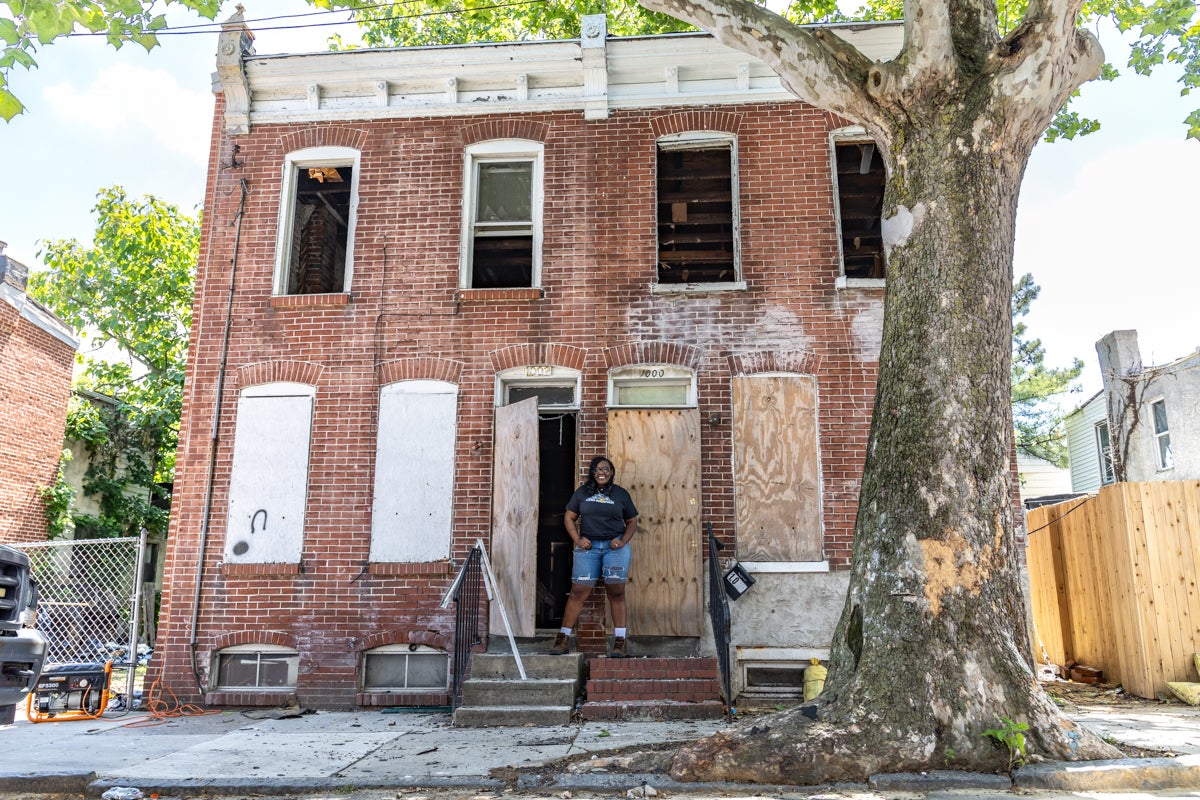
All of the approved Delaware Catalyst Fund projects for the first round of funding went to developers in Wilmington but the second round is likely to include more communities like Milford, according to Cinnaire.
The potential pool of homebuyers eligible are middle class, whereas most affordable housing programs require low income buyers.
Homebuyers can earn up to 120% of the area median income, which is roughly $96,000 a year for an individual living in Wilmington and $137,600 for a family of four.
“Teachers, firefighters, emergency personnel,” said Dionna Sargent, vice president of community development for Cinnaire. “We want to make sure that our workforce has access to affordable housing.”
The $13 million program is likely to produce 60 affordable homes, which isn’t enough to make a big dent in the housing market. But there’s some relief.
“For lower income households and younger households, the housing market is extremely expensive at the moment and home ownership opportunities are extremely difficult to come by,” said Sean O’Neill, a policy scientist at the Biden School of Public Policy and Administration at the University of Delaware.

Not even real estate developer Bass Davis is a homeowner yet.
“But I will be soon,” she said. “I’m looking for our first fixer upper since we’re going to build our own house. And I’m a city girl.”
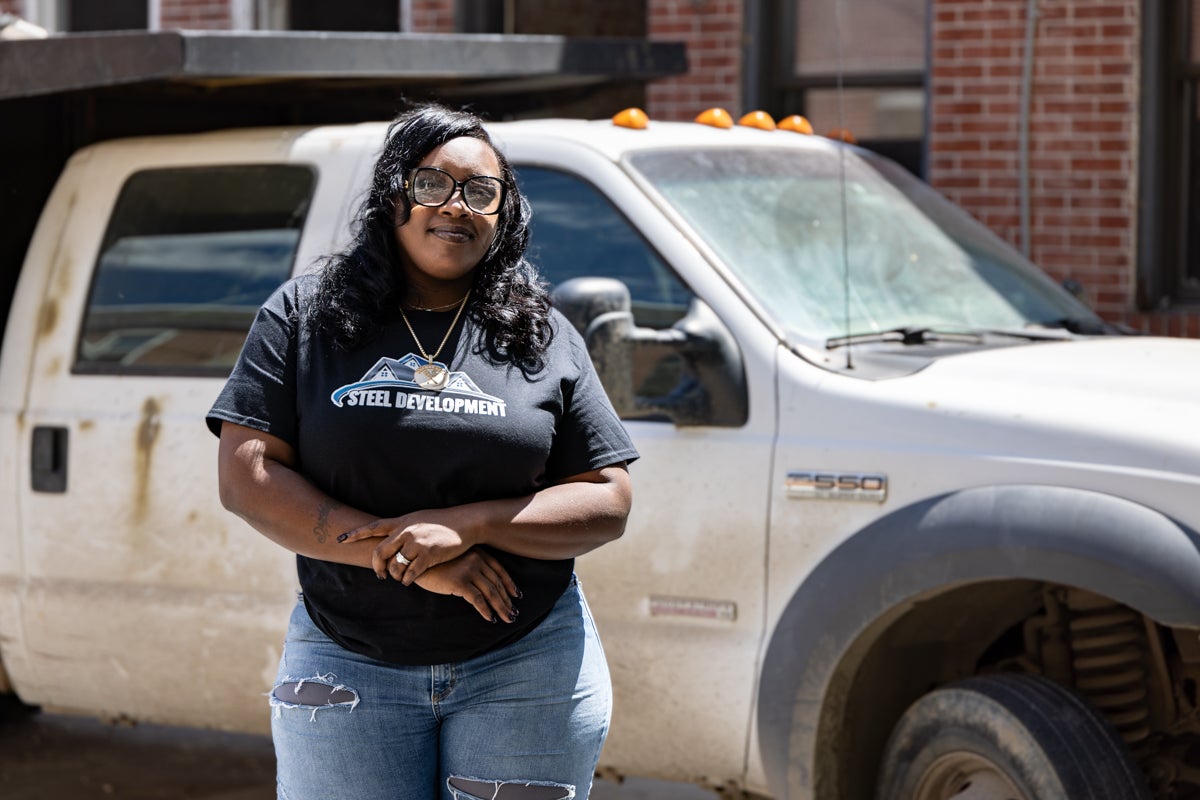
Affordable housing advocates like Shyanne Miller, a community organizer with the H.O.M.E.S. campaign in Wilmington, said there’s a rental affordability crisis in the city that is threatening the potential for future home ownership.
“If you can’t afford high rent, you’re not going to be able to afford home ownership,” Miller said.
While she’s glad to see programs like the catalyst fund, existing homeowners are still threatened with foreclosure over unpaid water bills in the city. She’d rather see sustained commitment to changing policies and dedicated long-term investment in housing.
“The money will run out as it usually does,” she said. “We don’t need another pilot, we know affordable housing works.”
While the federal stimulus money has been spent, developers can choose to take their profits from their projects and reinvest it.
And that’s just what developer Bass Davis wants to do.
She plans to purchase more blighted homes for affordable rentals — specifically for formerly incarcerated people and military veterans.
“That class of people who are sometimes forgotten about,” she said.

Get daily updates from WHYY News!
WHYY is your source for fact-based, in-depth journalism and information. As a nonprofit organization, we rely on financial support from readers like you. Please give today.


